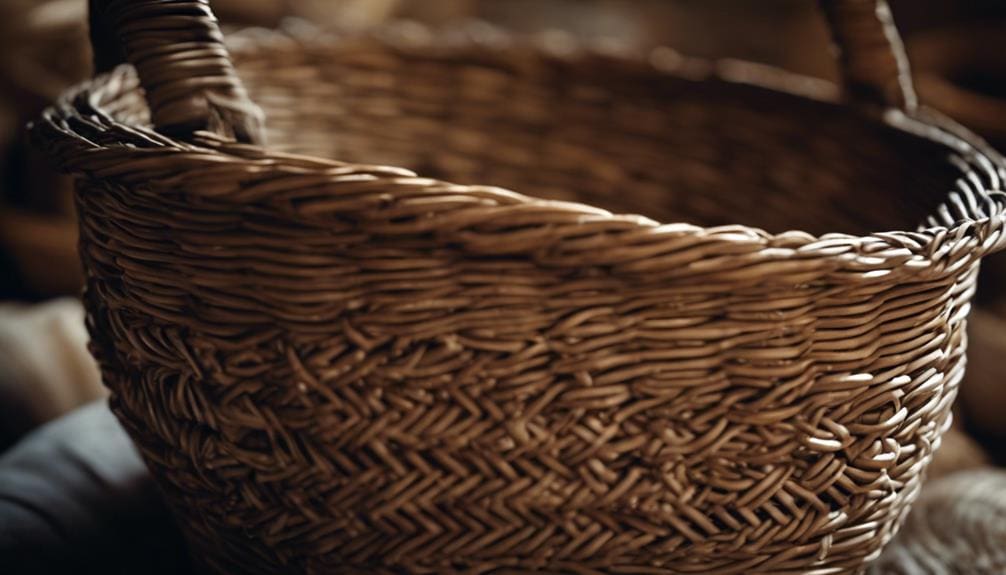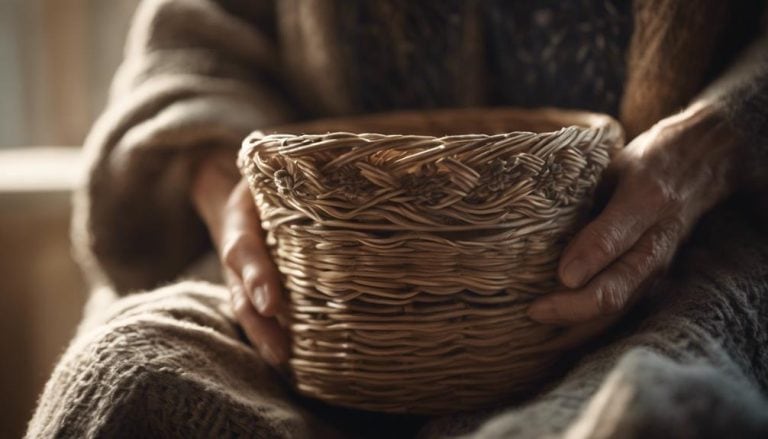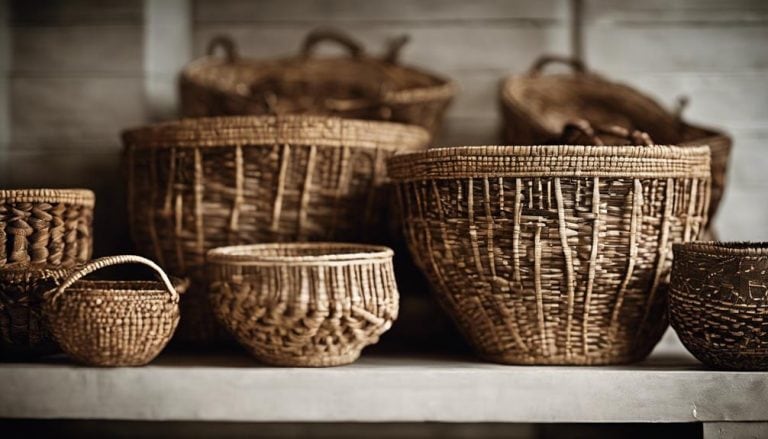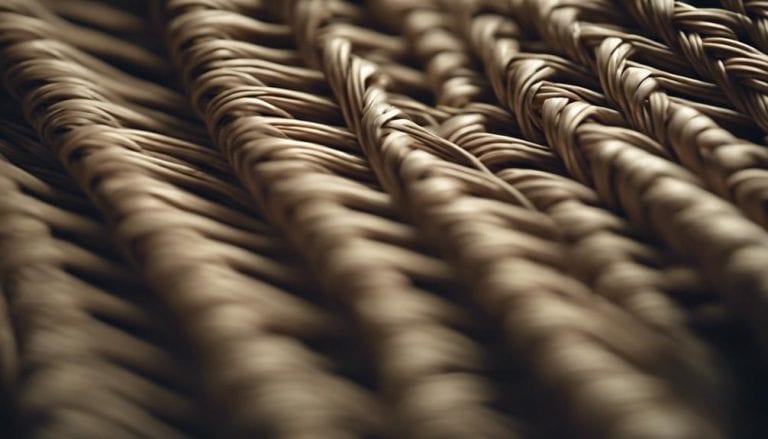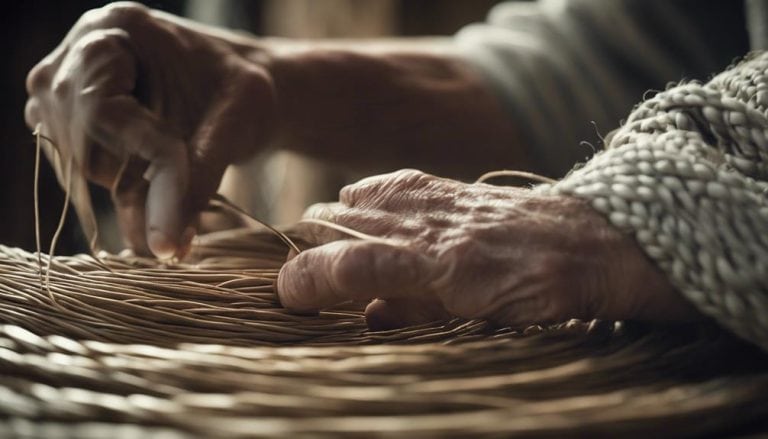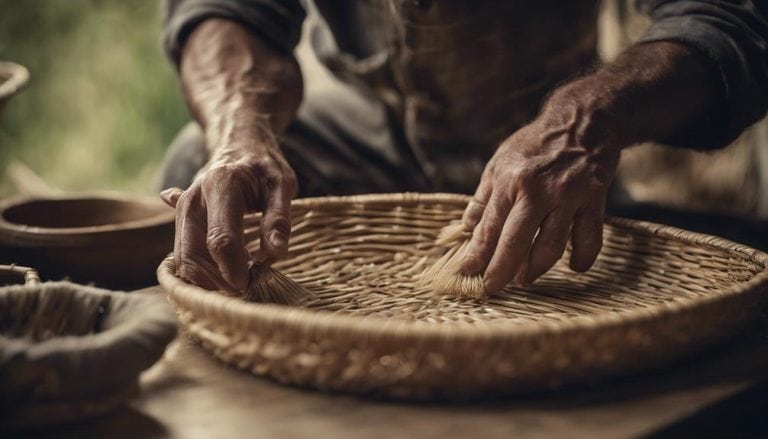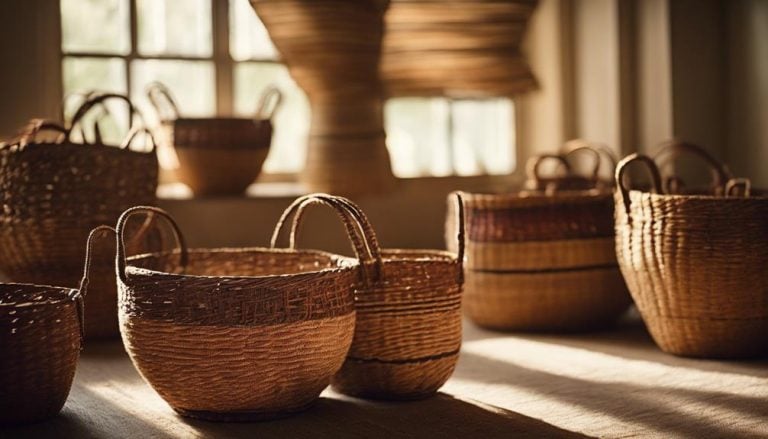Techniques for Preserving Woven Baskets
Preserving woven baskets is a delicate art that requires careful attention and regular maintenance. It involves employing various techniques to protect these intricate creations from the ravages of time and elements.
From gentle cleaning methods to proper storage practices, there are steps one can take to ensure the longevity and beauty of these handcrafted treasures.
But what are these techniques, and how can they be implemented? Join me as we explore the world of preserving woven baskets and uncover the secrets to keeping them in pristine condition for years to come.
Key Takeaways
- Regular cleaning and maintenance, including dusting and gentle washing, enhances the appearance and prolongs the lifespan of woven baskets.
- Proper storage in a dry, cool place away from direct sunlight and heat sources, using acid-free tissue paper and avoiding stacking heavy items, protects woven baskets from damage.
- Promptly addressing any loose or broken weaving, using matching material for repairs, and seeking professional restoration for valuable or antique baskets, preserves the original beauty and functionality of the baskets.
- Using natural pest repellents, storing baskets in airtight containers, applying UV-resistant sprays or treatments, and regularly inspecting for pests and color fading helps protect woven baskets.
Cleaning Woven Baskets
Cleaning woven baskets is an essential step in preserving their beauty and functionality. Regular maintenance ensures that dirt and dust don't accumulate, keeping the baskets looking their best.
To clean wicker baskets, I start by dusting them with a paintbrush, carefully reaching into the woven strands to remove any debris. For a deeper clean, I use a mixture of soapy water or an all-purpose cleaner, being mindful not to oversaturate the material. This helps to remove any stains or grime that may have built up over time.
One common issue with woven baskets is the growth of mildew. To tackle this problem, I mix white vinegar and water and use a microfiber cloth to wipe away any mildew spots. This solution is effective in killing the mold and preventing it from spreading. After cleaning, it's crucial to ensure that the baskets are completely dry. Any leftover moisture can lead to mold or mildew growth. I place the baskets in a well-ventilated area and let them air dry thoroughly before using or storing them.
Taking the time to clean woven baskets not only enhances their appearance but also prolongs their lifespan. By following these cleaning techniques, I can enjoy my wicker baskets for years to come.
Storing Woven Baskets
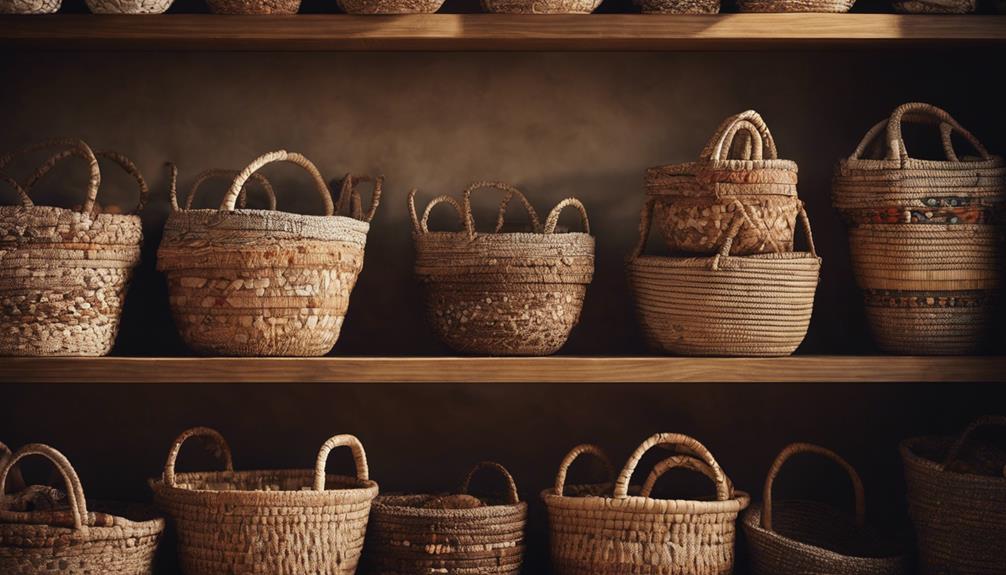
When it comes to preserving the beauty and quality of woven baskets, proper storage is crucial. Storing baskets in the right way can help prevent moisture damage and ensure their longevity. To start, it's important to store baskets in a dry environment. Moisture can lead to mold growth and deterioration of the fibers, so keeping them away from wet areas or sealed plastic bags is essential.
Controlling the humidity levels in the storage area can also protect the baskets. Utilizing dehumidifiers can help prevent excess moisture from damaging the woven fibers. Additionally, it's important to keep baskets away from fire, heat sources, and direct sunlight. These elements can cause color fading and damage to the delicate fibers.
Before storing the baskets, it's recommended to clean them properly. Dust, stains, or mold can affect the quality of the baskets, so it's important to address these issues before storing them. By following these storage techniques, you can help preserve the beauty and integrity of your woven baskets for years to come.
Repairing Damaged Baskets
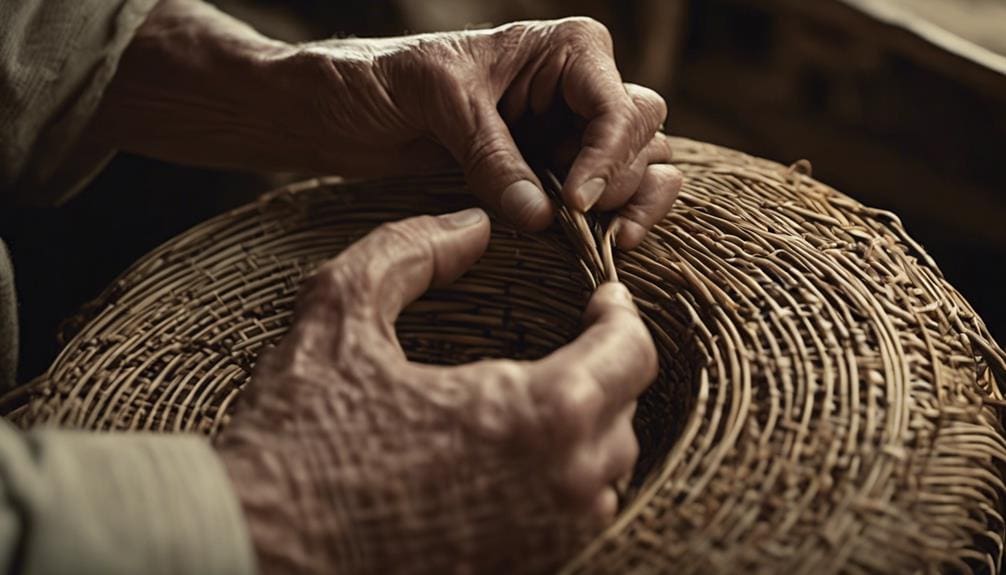
I've noticed that repairing damaged baskets requires the expertise of professional restoration services to ensure proper techniques are used. When it comes to preserving woven baskets, the art of repair is crucial in maintaining their original beauty and functionality. Here are four key points to consider when seeking professional restoration for your woven baskets:
- Salvaging extensive damage: Professional restoration can work wonders in salvaging baskets that have suffered extensive damage. Whether it's a broken handle, a torn weave, or missing elements, experts have the skills and tools necessary to bring these baskets back to life.
- Repairing intricate patterns: Woven baskets often feature intricate patterns and designs, making their repair a delicate task. Restoration experts have the knowledge and experience to reweave damaged sections and restore the intricate patterns, ensuring that the basket retains its unique cultural significance.
- Reinforcing weak areas: Over time, baskets can develop weak areas that compromise their structural integrity. Professional restoration involves reinforcing these weak spots to ensure the basket is sturdy and can withstand regular use.
- Replacing missing or broken elements: In some cases, baskets may have missing or broken elements that need to be replaced. Restoration services can source matching materials and expertly integrate them into the basket, maintaining its overall aesthetic appeal.
Protecting Baskets From Pests
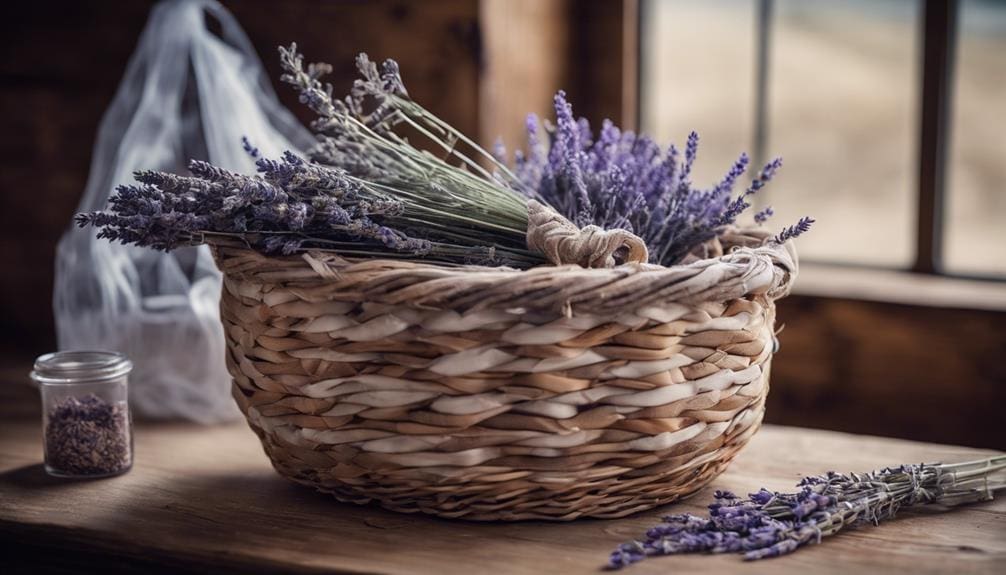
To protect woven baskets from pests, it's essential to take proactive measures that deter infestation and preserve their integrity. Keeping baskets clean and well-maintained is crucial in preventing pest intrusion.
One effective method is to use natural pest repellents like lavender, cedar, or citrus peels. These scents are known to repel insects and can be placed near the baskets or inside storage containers to deter pests. Additionally, storing baskets in airtight containers or sealed plastic bags can prevent pests like moths and beetles from infesting them.
Regular inspection of the baskets is also necessary to detect any signs of pest infestation such as holes, droppings, or webbing. If such signs are found, immediate action should be taken to address the issue. Avoid placing baskets near food sources or damp areas that attract pests and promote infestation.
In case of a severe infestation, it may be necessary to seek professional pest control services to protect your valuable woven baskets. By following these steps, you can ensure that your baskets remain pest-free and maintain their beauty and functionality for years to come.
Preventing Color Fading in Baskets
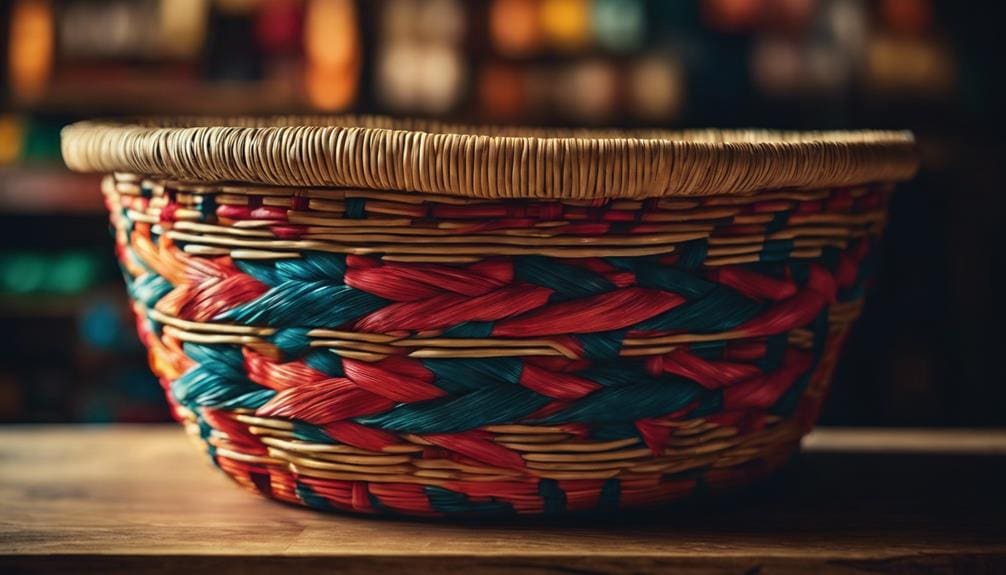
As we continue our exploration of preserving woven baskets, we now turn our attention to the important topic of preventing color fading in these exquisite pieces of craftsmanship. The vibrant colors of wicker baskets can fade over time due to factors such as direct sunlight exposure and high humidity. To ensure the longevity of their colors, here are some techniques to consider:
- Avoid direct sunlight: Direct sunlight can be harsh on the colors of woven baskets, causing them to fade quickly. It's advisable to keep baskets away from windows or any other areas with prolonged sun exposure.
- Store in a cool, dry place: High humidity can also contribute to color fading. Storing baskets in a cool, dry place helps to maintain their original colors and prevent damage caused by moisture.
- Use UV-resistant sprays or treatments: Applying UV-resistant sprays or treatments can provide an extra layer of protection against color fading. These products create a barrier that shields the baskets from the damaging effects of UV rays.
- Rotate periodically: To ensure even exposure to light, it's recommended to rotate the baskets periodically. This prevents certain areas from fading more than others, resulting in a more uniform appearance.
Enhancing the Durability of Woven Baskets
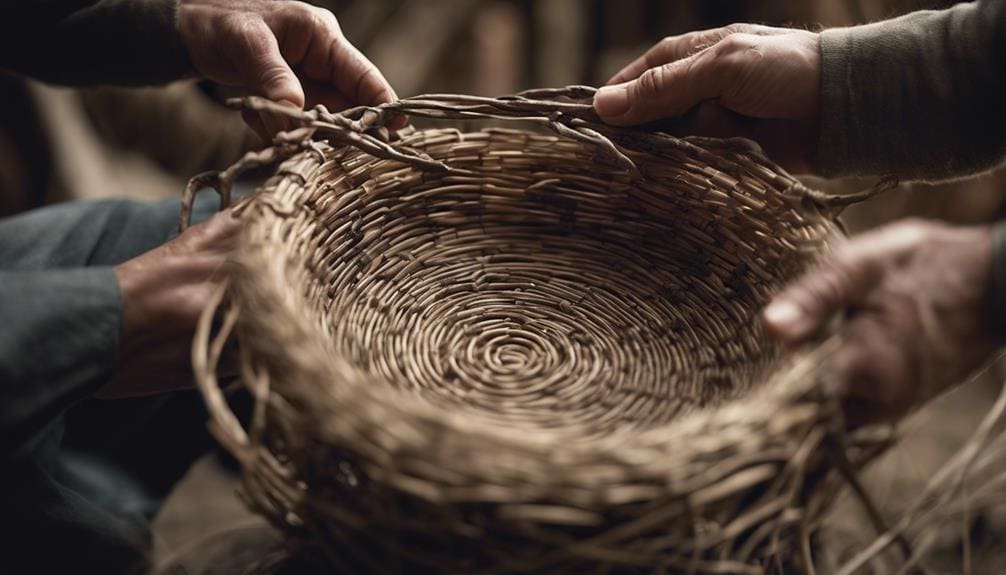
Enhancing the durability of woven baskets can be achieved by applying a protective Danish Oil Wood sealer both inside and outside the baskets. This technique provides an effective shield against mold, dirt, and moisture damage. The sealer forms a protective layer that prevents these elements from penetrating the natural fibers of the basket, ensuring its longevity.
When applying the Danish Oil Wood sealer, it's important to use multiple coats to maximize protection and durability. This helps to create a long-lasting barrier that safeguards the basket from potential harm. Although the sealer may darken the reed slightly, the benefits it offers in terms of protection far outweigh this minor aesthetic change.
To ensure a convenient and efficient application process, using a spray can for sealing is recommended. This not only makes the process easier but also ensures easy cleanup afterward. However, it's essential to maintain proper ventilation during the application to avoid inhaling any fumes and to create a safe environment.
Frequently Asked Questions
How Do You Preserve Woven Baskets?
To preserve woven baskets, I use natural oils to condition and protect the fibers. I control humidity levels to prevent moisture damage. Regular cleaning keeps them free from dust and debris. Proper storage techniques help maintain their integrity and beauty.
How Do You Seal a Woven Basket?
Sealing a woven basket enhances its durability, prevents moisture damage, and provides long-term storage solutions. To achieve this, I apply multiple coats of Danish Oil Wood sealer, both inside and outside, ensuring natural preservation while protecting against mold and dirt.
How Do You Keep Wicker Baskets From Drying Out?
To keep wicker baskets from drying out, I control moisture levels by storing them in a controlled humidity environment or using a humidifier. I also condition them with a light coat of natural oil and consider environmental storage factors.
How Do You Protect Baskets?
I protect my baskets by applying Danish Oil Wood sealer inside and out. It's like giving them a shield against mold, dirt, and stains. Multiple coats ensure long-lasting preservation without sacrificing their natural beauty.
Conclusion
Preserving woven baskets is a labor of love, requiring regular cleaning and proper storage. By implementing these techniques, we can ensure the longevity and beauty of these cultural treasures.
Just as the careful restoration of a painting preserves its history, so too does the maintenance of woven baskets honor their cultural significance.
Let's continue to cherish and protect these woven works of art, for they hold within them the stories and traditions of our ancestors.

